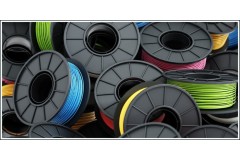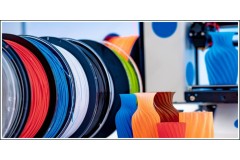
It is common to have to glue several parts of a 3D printed object. Most of our models proposed in several parts have, in their very design, a way to easily interlock them without the need of glue (also making this operation reversible, facilitating transport for example), but the question of a final adhesion is interesting and deserves to be explored.
The technique to be used obviously depends on the printing material used, here are the tracks for the main ones:
1- PLA filament :
When it comes to gluing two parts of a 3D printed object in PLA, there are a few options to consider:
- Super glue: A fast-drying adhesive that can work well for PLA, but be careful not to use too much as it can melt the plastic.
- Epoxy: A two-part adhesive that provides a strong, durable bond. Make sure to select an epoxy that is compatible with PLA.
- Cyanoacrylate glue: Also known as "instant glue" or "crazy glue," cyanoacrylate can work well for PLA but may not be as strong as epoxy.
- Acetone: While acetone is not technically a glue, it can be used to fuse PLA parts together. This method involves applying a small amount of acetone to the edges of the parts to be joined and holding them together for a few seconds until they fuse.
2- Resin object :
When gluing two parts of a 3D printed object made of resin, the options for adhesives are slightly different than for PLA :
- Epoxy: A two-part adhesive that is compatible with many types of resin and provides a strong, durable bond.
- Cyanoacrylate glue: Also known as "instant glue" or "crazy glue," cyanoacrylate can work well for resin but may not be as strong as epoxy.
- UV-curing adhesive: A type of adhesive that is activated by exposure to UV light. This type of adhesive can work well for resin, but it may not be as strong as epoxy or cyanoacrylate.
- Resin-specific adhesives: Some manufacturers offer adhesives specifically designed for use with their resin 3D printing materials. These adhesives may provide the best bond for that specific type of resin.
3- ABS filament :
Some options to consider in this case:
- Acetone: ABS can be dissolved in acetone, so brushing a small amount of acetone onto the surfaces to be joined can create a strong bond. However, this method can be messy and requires proper ventilation.
- ABS cement: ABS cement is a solvent-based adhesive that works by dissolving the ABS and then fusing the parts together. It can provide a strong bond, but like acetone, it requires proper ventilation.
- Epoxy: Epoxy can work well for ABS, providing a strong, durable bond.
- Cyanoacrylate glue: Also known as "instant glue" or "crazy glue," cyanoacrylate can work for ABS, but may not be as strong as other adhesives.
Note :
Please note that, for any material used, it's important to test a small area first to ensure that the adhesive is compatible with the ABS and provides the desired strength and durability. It's also important to follow the manufacturer's instructions for the adhesive and use it in a well-ventilated area.
Some of the proposed techniques involve the use of potentially dangerous products (acetones, expoxy, ...): please be careful, an incident can happen quickly.



